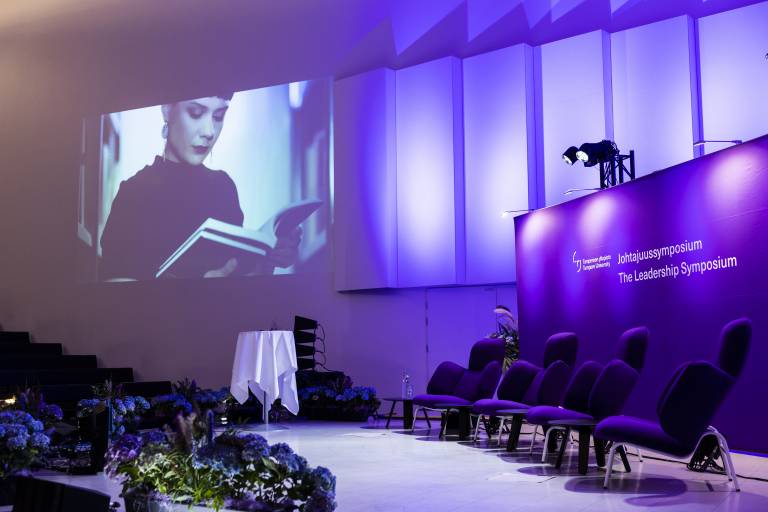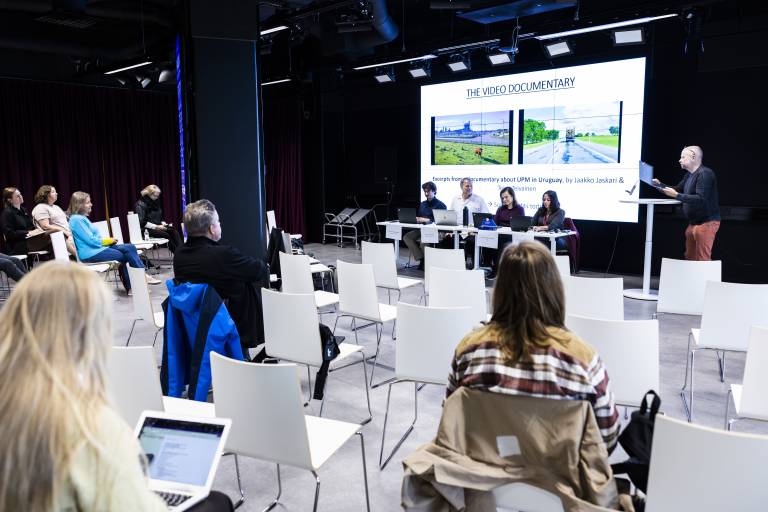Next, we will present you the public descriptions of the case studies, prepared by the six groups of students.
SASK case: A Just transition in South Africa in its social, economical and ecological aspects
Poverty, economic vulnerability and inequality remain widespread issues in many African countries. Trade union movements and labor organizations play a role in fighting these problems by promoting decent work and living wages for everyone. As climate change is accelerating and the world is shifting to a low-carbon society, the need for a just transition is becoming more urgent. SASK, the only Finnish human rights organization focusing on workers’ rights, supports the reduction of poverty and inequality by strengthening the trade union movement and position of workers in developing countries. This study aims to help SASK increase its knowledge and understanding of just transitions in the context of South Africa.
Having identified key stakeholders in the South African energy sector, namely private and public companies, governmental institutions, trade union federations and media, we look at how each of these stakeholders address just transition in their sustainability and climate change reports, future strategic plans and media statements and articles. Using content analysis method, we examine just transition from three perspectives: environmental, economic, and social.
The results indicate that just transition is discussed in different ways by different stakeholders in South Africa. The term “just transition” itself wasn’t that often mentioned in the data collected, instead just transition related terms, processes and principles were more often presented. SA Energy sector actors indicate different focus on social, environmental and economic dimensions and highlight different actions as dominant. Just transition is seen as an opportunity with multiple positive outcomes and at the same time just transition appears as challenging process to implement and adopt.
Keywords: just transition, low-carbon economy, South Africa, labor organizations, sustainability, energy sector.
The description was compiled by Karoliina Heikkilä, Tiina Kalinen, Alberto Monroy Trujillo, Valentyn Nizyev, and Saara Sokura.
Case Tappara: Saving the Finnish winters – Climate change mitigation through public transportation to ice hockey games
Global temperatures are on the rise since records began, caused by the human-led emissions of greenhouse gases in the atmosphere (IPCC, 2014; 2015). Living in a world that it is already affected by climate change can generate feelings of inaction and anxiety, but private organizations have the resources and innovation to help make a change. This study aims to contribute to climate action, by investigating how a sports organization, Tappara, an ice hockey team based in Tampere, Finland, can mitigate its GHG emissions related to transportation. Whereas winter sports are menaced by climate change, it also offers the opportunity for organizations such as Tappara to lead the way on protecting Finnish snowy winters, and to generate societal value through climate action. With sports events, there are masses of people travelling to matches, and for example, as Chirieleison at al. (2019) believe, the means of transportation to sports event can enhance the general sustainability of the event.
“Saving the Finnish winters” is a case study on usage of public transportation to Tappara’s ice hockey games. Our case company, the Finnish ice hockey team Tappara, has stated that over 90% of their GHG emissions come from heating, electricity and spectator transportation to the games. Currently, a new arena with a very central location is being built, giving the spectators better chances to use public transportation. Additionally, due to the location of the arena and for the sake of traffic, increasing the use of public transportation is important. Therefore, we studied how the spectators’ use of public transportation to the games could be increased. The research method for our study was quantitative and we targeted our online survey to Tappara fans. We asked about demographics, use of public transportation and for other reasons that dictated their choice of transportation. With this method, we aimed to find answers that enabled us to form suggestions to Tappara, that could help them to increase spectator use of public transportation.
Our findings suggest that majority of the respondents did not use public transportation when going to the games, and if they used it, it was not for ecological reasons. The main inhibitors for using public transportation were poor connections and inconvenience. Therefore, our study produced the following suggestions: increasing economic incentives for public transportation use, for example cheaper tickets and special routes on game nights and increasing communication and knowledge about transportation opportunities. Other solutions also include investing in an enjoyable and fun atmosphere in the special routes provided for the games and creating a friendly competition between ice hockey teams in Tampere. The winning team would be the one that engages more fans to use public transportation.
The description was compiled by Elisa Lyytikäinen, Gabriel Maciel Marães, Raysa França, Vilma Perttula and Gresa Semsedini-Sylejmani.
Case Workpilots 1: Business master’s students’ perceptions of future working life
Economic, societal, and technological changes in the early 21st century and correlated shifts in modes of employment pose challenges and opportunities to younger generations. How and why young people engage in employment or otherwise miss or opt out will have profound ramifications for individuals, societies, and economies.
In this case study we seek to elucidate and explore the attitudes, hopes and values of a specific group of youth to the future and their employment. We then make recommendations for how new knowledge and insights may be applied to the real world and used by WorkPilots Oy, an enterprise seeking to bring work opportunities to people.
The group developed the research problem through a review of pertinent academic literature which served to inform us of the field of research while also illuminating gaps in knowledge. From here we applied constraints to the scope of the case study, taking into consideration resources, and identified an area in which to best contribute. This guided us to focus on the perceptions of business master’s students towards future working life. To this end we designed an open-ended questionnaire as the method for data collection from the target group. A thematic analysis of data collected from business students was conducted to identify, analyze, and interpret patterns of meaning. This revealed a wide range of views and aspirations towards future working life.
The research results offer insights into how to engage a specific segment of youth, and thus how WorkPilots’ could develop its existing digital gig work platform to assist master’s students. Such a service could provide a new avenue to help youth people initiate, develop, or try out a career or career path. This cross-section of encapsulating changing perceptions and attitudes to work through research, shifting employment environment and new technology platforms could prove insightful in meeting new challenges for the organization, youth, and society.
The description was compiled by Kaisu Alatalo, April Hautala, Andrew Jones, Teemu Korvenpää and Merle Soppela.
Case Workpilots 2: What are the challenges and opportunities of gig work?
Work life is changing rapidly, and new ways of finding work and labour, and doing work are thus needed. Gig economy is one of the current ways to connect labour with companies that do not have the resources to hire full-time employees or that work in a field where work is sporadic rather than constant. While the perfect way to offer work experience and earn one’s living, gig economy has been criticised on the global scale from the US to Europe (e.g. Financial Times 2020, Justice4couriers 2020). Why is this? Is it not a good thing that people find work and can live more independent lives?
This research explores the ethicality of gig economy. It responds to the question of what the challenges and opportunities of gig work are and analyses the experiences of workers in gig economy through the lenses of two ethical theories: ethics of care and utilitarianism. The data was collected by interviewing three gig workers and analysing the data with a content analysis method. This research was made as a case study for WorkPilots, a platform company connecting labour force with their client companies.
The results show how similar experiences gig workers have irrespective of their field. Rather surprisingly, none of the interviewees claimed gig economy to be ‘bad’: they all understood the rules of the game and adapted to the work condition, because to them, this was the best option they could have at the time.
Understanding how gig workers find their work, the challenges and the opportunities, and how they value it, is crucial in building more ethically operating gig platforms, and this was the guiding idea behind this research. The results of this work aim to give an idea of what it is that gig workers think of their field of work and, potentially, suggest some line of future action to WorkPilots.
The description was compiled by Jasmina Ahonen, Sara Juujärvi, Joonas Ollgrén, Maria Toivanen and Marc Wolsztynski.
Case Rekola 1: Community Supported Agriculture – A guide for starting a farmer driven CSA
The problem statement of this case study was defined by the case organisation Rekola farm, which practises Community Supported Agriculture (CSA), an alternative socioeconomic farming model, where the producers and the consumers share the risks and responsibilities as well as rewards of farming activities through long–term agreements. Hence, with the derived research question “How can a farmer–driven CSA model be successfully adopted by other farms around Finland?” the objective of this case study was to elaborate a guide for CSA-interested farmers based on the information provided by the literature and CSA practitioners directly.
The qualitative approach of our study is reflected in the data collection method through a semi-structured interview and two email questionnaires with CSA-practising farmers. Pursuing with an inductive content analysis approach the information was categorised in 4 dimensions and successively 14 themes were identified. Furthermore, the findings in each theme were processed according to the 8 steps change model by John P. Kotter (1996). Eventually the resulting graph constitutes the core of the guide for starting a farmer driven CSA. The case organisation considers the guide to provide valuable insights and thus, it will be shared with Finland’s CSA umbrella organisation Kumppanuusmaatalous Ry for its free use and CSA promotion purposes. The guide is accessible for everyone and can be consulted here: CSA guide.
The description was compiled by Mariana Dieste, Mérédith Chuzel-Marmot, Mikko Noronen and Mirjam Schwitter.
Case Rekola 2: – The societal impacts of CSA through the concept of alienation and connections
In this case study for Rekola, we examined the societal impact of Community Supported Agriculture (CSA). More specifically we investigated the feeling of connection in the context of CSA. CSA refers to an alternative socioeconomic model of agriculture that connects the consumers and the farm and is often said to offer a sustainable alternative to the “conventional” food system. Some might see joining a CSA as giving up some material and immaterial benefits when turning away from the conventional, flexible grocery chains, but in return one might obtain personal benefits from CSA in forms of creating new connections: connections to other human beings and one’s community and to nature.
In our literature review we focused on searching connections in different countries that we could use later to reflect our own findings on. After that we conducted a qualitative study with three semi-structured interviews and four interviewees, as well as 5 e-mail questionnaires to support our findings from the interviews. We analyzed the data using qualitative content analysis with a deductive approach. The thematic analysis on the transcribed interviews was therefore guided by pre-defined codes, focusing on these previously stated different connections.
Since CSA is quite a new phenomenon in Finland, we offer new information on connections in CSA from the Finnish perspective in addition to the hypothetical impacts that were observed in other countries and that could apply here, too. Through the positive connections a CSA can offer for individuals, we hope that our results could motivate more people to look into CSA and the opportunity of it as a new, sustainable and environmentally friendly way of consumption.
Keywords: community supported agriculture (CSA), alienation, connection.
The description was compiled by Tatjana Blum, Roosa Kullberg, Juuso Ilmola, Katarina Sladakovic and Marja Turunen.
Case Spoken: CSR processes in a flat organization: Case study of identification and communication of responsibility at Spoken
The pressure to implement corporate social responsibility practices are increasing for organizations to be more transparent about their activities. A lot of attention has been paid to studying the external aspects of corporate social responsibility in an organization. The case organization Spoken operates in transcription, subtitling, proofreading and translation service, and they employ a workforce that works entirely remotely. In this case, the aim of the study is guided by the case organization’s aims to evaluate and identify CSR practices that are relevant to it. The focus of this study is to look at some internal aspects of corporate social responsibility in a flat organization, which is an organization model with no levels of middle management between the employee and executives (Ghiselli & Siegel, 1972). The study is conducted with qualitative and quantitative methods, which include interviews with the managers of the company, following an online questionnaire that was sent to its 120 employees. The original research problem statement in this case study was to search the most salient issues that need to be taken into account in the identification of business responsibility and its communication at Spoken. With the limitation of the case study, thus the research question was refocused on “What kind of a role does internal CSR play in a flat organization such as Spoken?” The interviews and the questionnaire were formed from themes emerging from the literature, which are 1. organization values, 2. employees and relationship building and 3. vision of CSR at Spoken. The data was analyzed deductively, based on the themes, and it was contrasted with the literature. These results shed some light on what internal CSR can mean in the context of a contemporary flat organization. The findings of our study indicate that both internal and external CSR processes at Spoken are not yet developed. Our suggestion is to start with the basics of CSR implementation by creating their code of conduct and identifying their values and building a communication strategy on both. From there on, Spoken could Identify the proper strategies for developing both internal and external CSR strategies that fit their organization best.
The description was compiled by Belen Fuentes, Ville Pesola, Loriin Sheble, Victor Théorêt and Sari
Veripää.




